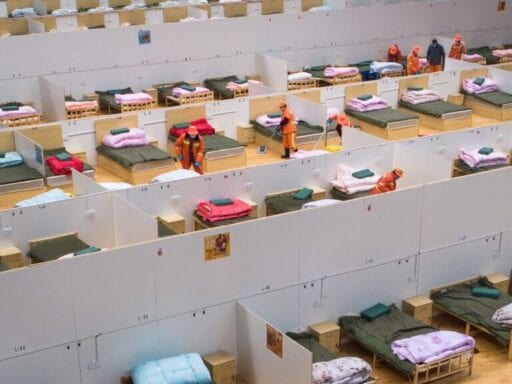“We need to be very careful when interpreting any extremes.”
Earlier this week, stories and tweets speculating about a downward trend in the number of cases of Covid-19, the new coronavirus disease, cast a ray of hope on what’s been a remarkably worrisome outbreak.
By Thursday morning, that hopeful tone vanished, as news broke of a surge in the case and death toll — to 60,363 and 1,370 respectively.
While it’s easy to get caught up in the roller coaster of spikes, plateaus, or ticks down each day, here’s the thing: These incremental developments don’t necessarily reflect the big picture.
“We have seen a significant spike in the number of reported cases in China but not a significant change in the trajectory of the Covid-19 outbreak,” said the World Health Organization’s Mike Ryan, director of the agency’s health emergencies program, in a press conference Thursday. “This increase is in large part down to a change in how cases are diagnosed and reported”
He sounded a note of caution: “We need to be very careful when interpreting any extremes.”
That’s because even though it may feel like this coronavirus crisis is dragging on, we’re actually still early in the outbreak of a brand-new virus. The way this disease is being diagnosed and tracked is very much a work in progress. And as more countries get diagnostic tools, and each come up with their own ways of classifying a Covid-19 case, we will surely be in for many more spikes and plateaus that don’t actually tell us much about how the virus is spreading. The story of the latest coronavirus surge helps explain why.
Why the coronavirus cases spiked overnight
On Thursday, officials in Hubei province — the epicenter of China’s outbreak — added more than 14,000 new coronavirus cases to their tally. That was the single biggest increase in cases recorded in one day. The province’s death count also surged to 1,370, with 254 new deaths.
But, Ryan said, “This is an artifact of the reporting,” — not a sign that the outbreak is spreading faster or further.
So what does this mean?
Early on in an epidemic of a new disease, it’s not unusual for health officials to shift the definition of what they consider an official case as they learn about the disease or as they grapple with the resources they have to find and diagnose cases.
And that’s exactly what happened here. In Hubei province, health officials essentially broadened the definition of what could be counted as a case on February 12. They decided trained medical professionals could classify a suspected case of Covid-19 as a confirmed one, based on findings in chest imaging and a doctor’s analysis.
In other words, a lab result was no longer necessary to consider a case confirmed. The change was made to speed up the finding of new cases, National Health Commission spokesman Mi Feng said, according to the AP. And it comes at a moment when hospitals in Hubei are overrun, and medical equipment is in short supply.
The 14,000 new cases weren’t even new, Ryan added: They were older cases reclassified based on the new definition.
For now, the rest of China is still using the results of lab tests to count confirmed cases —which is why the surge only appeared in Hubei. But we should brace ourselves for many more spikes and dips in this outbreak.
Author: Julia Belluz
Read More



